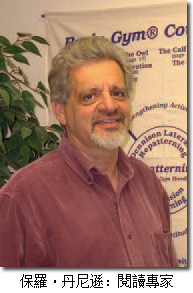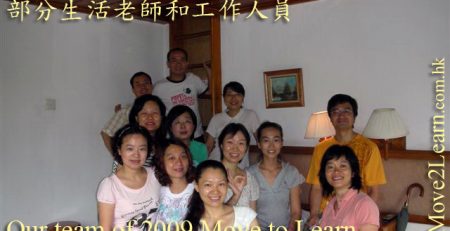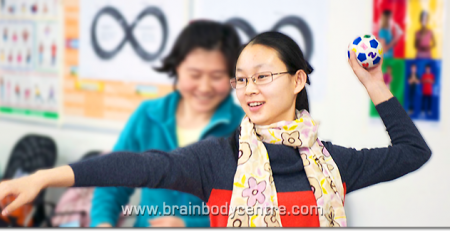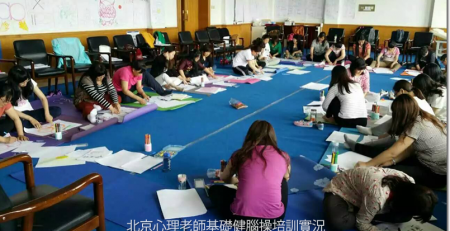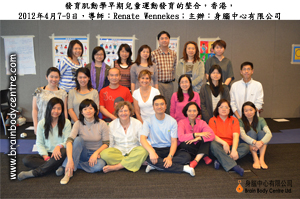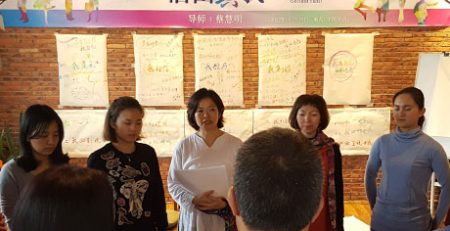RECLAIMING THE BIG PICTURE: HOW I IMPROVED MY VISION
© 2014 by Paul E. Dennison. All rights reserved.
I received my first pair of glasses after repeating the fourth grade because I’d failed to learn how to read. The eye doctor told my mother and me that my nearsighted vision was hereditary, and that I could expect it to get worse every year. My mother, an artist with excellent vision, didn’t understand the prognosis, as no one in our family had ever worn glasses. She said she suspected that it might have something to do with my long-time struggle in learning to read.
After I got my glasses, I did finally learn to read. The stronger lenses helped me to point my eyes on words, one at a time, and to focus primarily at near point (what I now refer to in my work as overfocus). In order to read with my corrective lenses, I inadvertently tuned out my “big picture” distance and peripheral vision. Years later, to improve my eyesight, I would need to relearn these and other important visual and motor skills.
Wearing glasses to school wasn’t easy. Other children taunted me, calling me “Four Eyes,” and I daily dreamed of seeing without my glasses. In high school I bought The Bates Method for Better Eyesight without Glasses,©1940, by Dr. William Bates, which inspired hope and gave me a view of vision that was more oriented to relaxation and process. I did the suggested exercises as best I could, yet didn’t perceive any changes, as I still needed my glasses to see.
Throughout my school and university career, I needed stronger and stronger glasses, as predicted by that first optometrist. In 1967 I became a reading teacher, and in 1975 I completed my doctorate in education. Around this time, I came in contact with several developmental optometrists who further influenced my understanding of vision as dynamic, rather than static.
It was the optometrist Gerald N. Getman(1), a remarkable man I had the pleasure to meet, who said that vision is “a learned skill of attention.” Dr. Getman made the distinction for me between eyesight and vision, noticing that such skills as identification, association, spatial relationships, and the ability to derive meaning and direct our thoughts or movement to act on that meaning, all occur in the brain, not the eyes.
In 1978 I attended classes with author and natural vision improvement teacher Janet Goodrich(2), who taught the Bates method that I had attempted, years earlier, to do on my own. Janet wanted her students to remove their glasses, yet I couldn’t do this because it made me dizzy.
While working with children and adults who had reading challenges, I found myself focusing on the physical skills of learning, such as eye movement, head turning, pencil holding, and sitting comfortably. I discovered specific physical movements (later to become the Brain Gym®(3) activities) that helped students to organize information in terms of their body’s midline (the sternum), and so learn to read and write without neck tension or visual stress.
Since the early 1980s, when I began to develop my Educational Kinesiology (Edu-K) work, many students have made spontaneous improvements in visual acuity after experiencing Edu-K balances(3) and such Edu-K processes as Dennison Laterality Repatterning. Yet, when I first met my wife and partner, Gail, I was still dealing with severe myopia.
To give you a sense of what this means, the healthy eye can instantly adjust to either a small or an extended focal length (using what’s called the power of accommodation), and so has the ability to view objects at great variances in distance. At that time, my prescription was -8.00 diopters, which meant that without my glasses I could see clearly only at a distance of up to 0.125 of a meter, or about five inches (at -3.00 diopters, a person would be unable at 20 feet to read any line on the Snellen Eye Chart, the traditional method of measuring acuity). Put more simply, my loss of visual acuity was considered severe.
In order to see distant objects, the ciliary muscles of my eyes would need to relax so that each lens could return to a flatter shape, yet the muscles no longer had that flexibility. At that time, I never removed my glasses and didn’t feel comfortable eating or even talking without wearing them (see the photo of me, at left, wearing that prescription).
I told Gail that I didn’t believe I could improve my eyesight. Although I was helping many people discover ways to improve their visual acuity, I believed that any such help was too late for me. Gail encouraged me to become an explorer of my visual experience, and we did a balance for the goal “To succeed in life with my natural vision.” The learning menu was what we now call Total Core Repatterning, and included pre-activities that challenged my acuity at various distances. We followed the body wisdom and also did some vision training from the course Educational Kinesiology in Depth: The Seven Dimensions of Intelligence.
Standing after the balance, I couldn’t believe that I could see without my glasses! I had an immediate vision improvement that was quite profound, and my habits of moving also went through a remarkable shift for the better. Gail and I ran up and down the street – me without my glasses, excitedly reading to her as license plates and street signs came into focus.
The challenge then was how to continue work when my eyesight had improved but it wasn’t yet clear enough to let me read or work comfortably without any lenses. Luckily, I had an old pair of glasses with a lesser prescription that I could wear to function. Meanwhile, I did Brain Gym activities every day, as well as Positive Point Palming and other Vision Gym® activities(4). Within two days, I was seeing clearly enough through my old glasses to put the newer ones aside for good.
Through the years, I’ve continued to balance, sometimes using the In Depth or Creative Vision work. Each time, there’s a substantial improvement, after which I use my older glasses (I’ve kept them all in a box!) or go to a developmental optometrist for new 20/40 glasses, for which I then balance until my vision is further improved. In other words, I use the old glasses as a pre-activity for “learning” to see clearly at that prescription level. I nearly always make an immediate leap in motor skills as well, and usually feel completely at ease with the older glasses prescription within a day or two.
Today, my vision continues to improve. I wear glasses for night driving, but for most daily-life activities, including reading and looking at horizons, I can see without any lenses or glasses.
Achieving the perfect visual acuity of 20/20 or 6/6 (the metric measurement) isn’t my goal. Just as shifts in movement habits can affect the visual system, every small vision improvement supports shifts in my ease of movement, also relaxing and expanding my thinking. When I notice myself thinking in too linear a way, I can now call on the more naturally integrating whole-to-parts approach to problem solving.
Studying and teaching vision has awakened both Gail and me to the need to make lifestyle changes by way of daily habits. Some of the important shifts we’ve made are:
making vision a priority
using Brain Gym or other activities to provide a whole-body context for movement of the eyes
relaxing the eyes and enjoying beauty
crossing the visual midline and centralizing in the midfield
looking near, far, and all around
taking more vision breaks, all day long, to do the above
I love my eyes and vision, and I take care of my eyesight as I would a precious gift. Having reclaimed the joy of good vision and the multi-dimensional perspective that goes with it, I wouldn’t want to return to corrective lenses that limit my range of focus and my flexibility to move and play. Cultivating my vision is an ongoing process, and I invite all who want to see without glasses and to see the big picture to explore that process with me.
(1) Gerald N. Getman, O.D., Your Child’s Intelligence.
Note: The optometric research over the years has consistently shown, for better and lesser readers alike, a relationship between reading difficulties and vision challenges (which are not always hereditary); a connection that I validated time and again using my own work with students. Another clarifying point, a person is considered legally blind if their vision is 20/200 (or worse) in the best eye with the best available correction.
(2) Janet Goodrich, Natural Vision Improvement.
(3) The 26 Brain Gym® activities are described in Brain Gym®: Teacher’s Edition by Dennison and Dennison, © 2010. The 26, Dennison Laterality Repatterning, and the Balance process are taught in Brain Gym® 101: Balance for Daily Life.
(4) The video “Move to See with Vision Gym®” offers descriptions of the 34 activities we do regularly to maintain and improve our vision. A Vision Gym kit is also available.
For anyone who would like to post this article on their website, please include this statement and link back to Hearts at Play website: “Originally published on April 11, 2014, at heartsatplay.com. Used here with permission.
Link: http://heartsatplay.com/reclaiming-the-big-picture-how-i-improved-my-vision”
Brain Gym® is a trademark of Brain Gym® International/the Educational Kinesiology Foundation. Click here for the name of an instructor near you.

